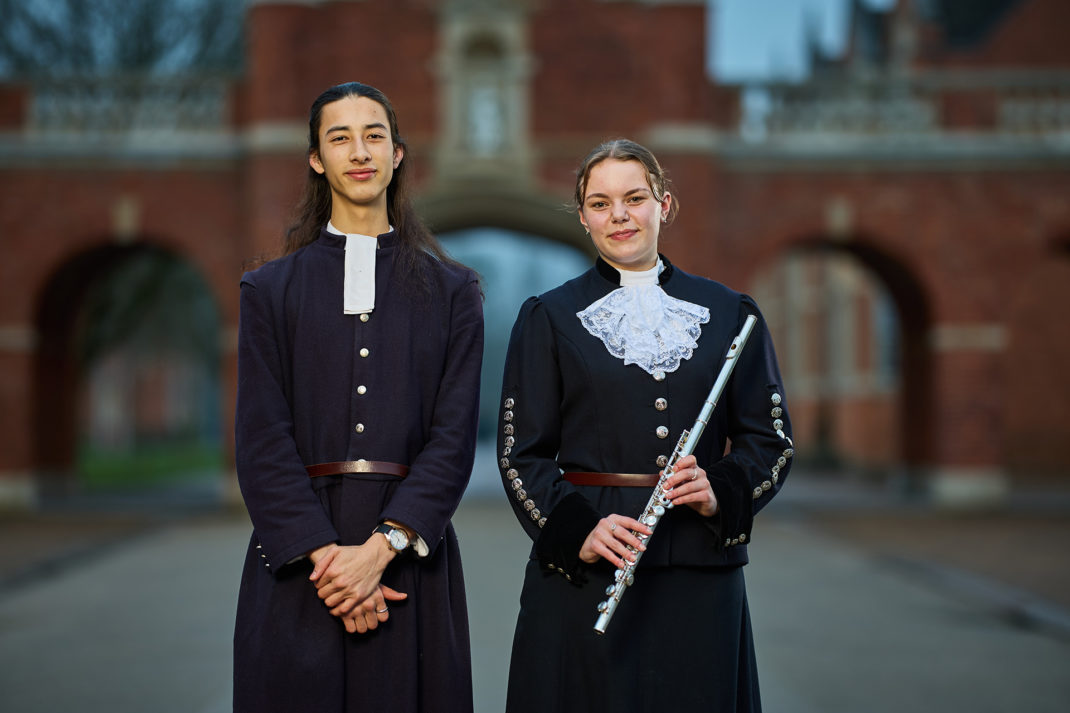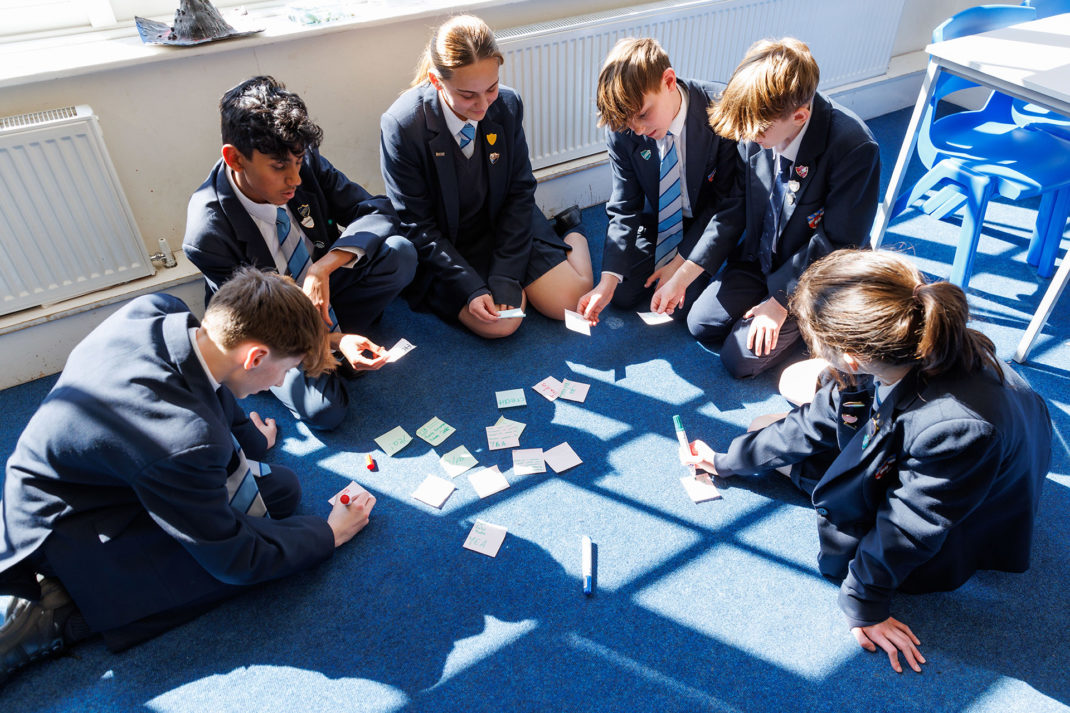Spectacular School Celebrations for Armistice Centenary
By
6 years ago
A mountain of poppies, remembrance and respect accumulates across the country
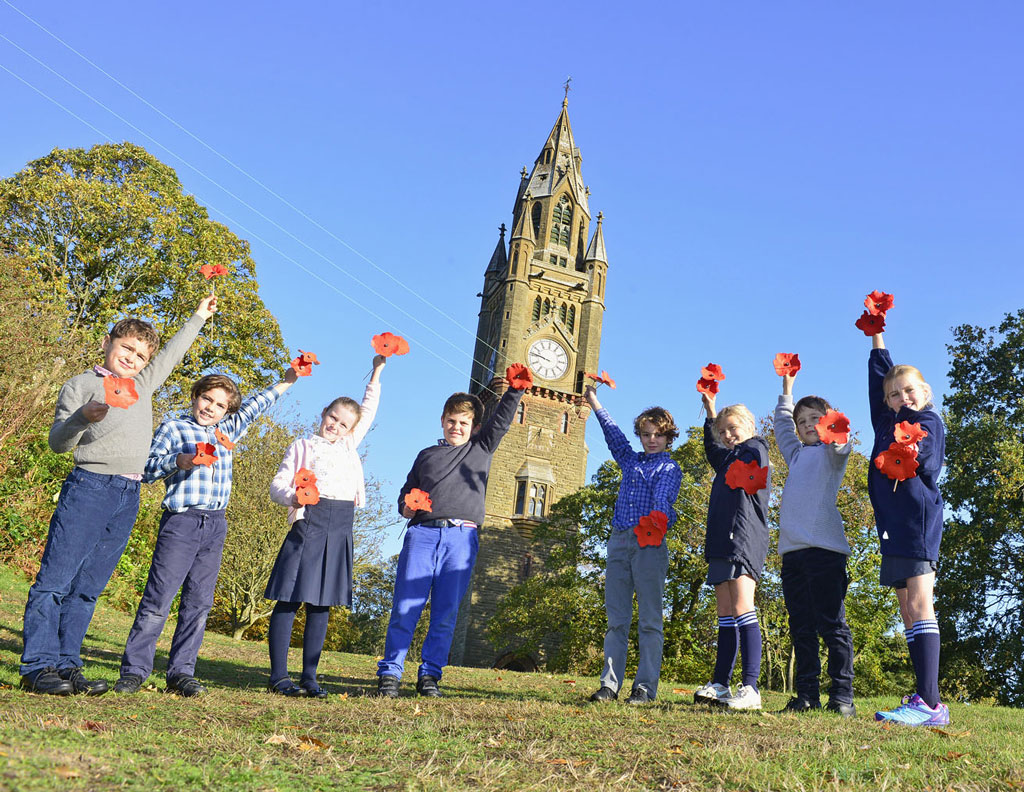
A deluge of remembrance and respect pours over fallen soldiers across the country
The Armistice centenary is being marked with passion and creativity and on a grand scale that speaks magnitudes of the country’s continued gratitude for and remembrance of the 700,000 British soldiers that were killed during WW1. Churches are transforming into pop-up cinemas across the country and the Tower of London was this week lit by 10,000 flamed torches to mark 100 years since the end of of the war.
Independent schools across the UK are showing their support and reverence for those that died in a multitude of creative and touching ways. Here’s a showcase of the best to help celebrate their efforts and spread the spirit of remembrance that their stories and displays so beautifully bring to life.
THE NEW BEACON SCHOOL, KENT
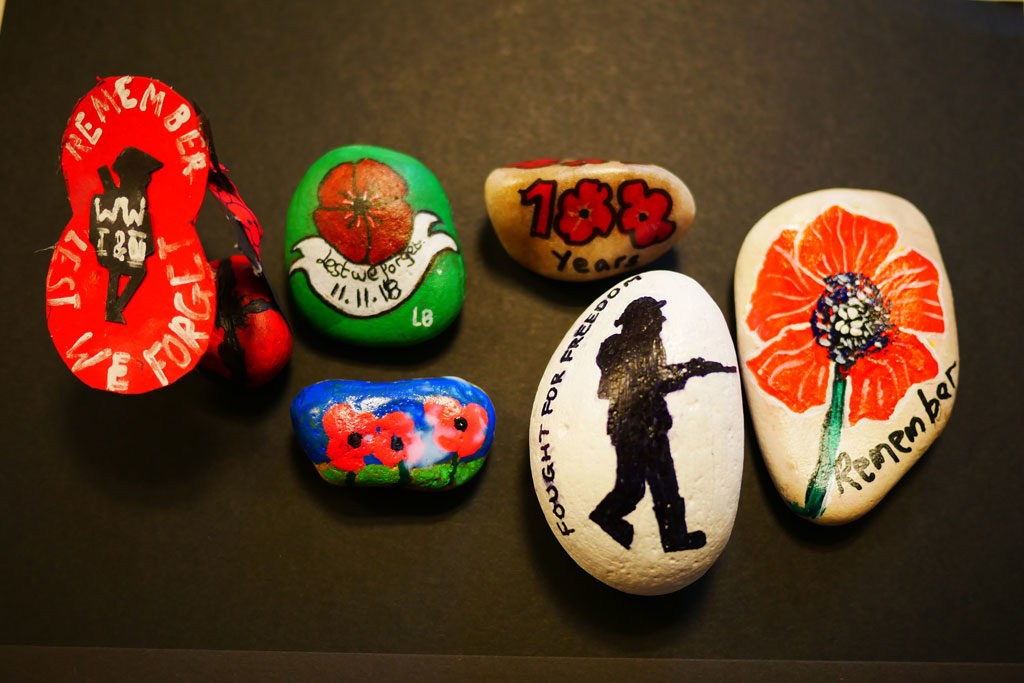
The whole school have been involved in painting the memorial pebbles which will be laid in a 100 formation on Thursday
This southern prep school are celebrating their annual Armistice Day event alongside a number of distinguished guests, such as Councillor Hogarth, Mayor of Sevenoaks, the ‘There But Not There’ artist Martin Barraud and a D Day Veteran, in order to celebrate this special 100 year anniversary.
The New Beacon School tragically lost 37 Old Beaconians in WW1. Siegfried Sassoon was a former pupil of the school, as was Hamo, his brother who died in Gallipoli in November 1915.
On Friday 9 November the whole school will line up on the playing fields in front of the school flagpole for the traditional act of remembrance. Each of the pupils has also painted a pebble in memory of those who died in WW1 and these will be laid out in a 100 formation as a visual reference for the day.
The flag will be lowered and the Last Post sounded on a trumpet, at which point the Headmaster will read from the poem For the Fallen by Robert Laurence Binyon. A commemoration wreath will be laid, the flag will be raised and the Reveille sounded. Following this, a service will be conducted in The New Beacon Centre which will include singing by well over 200 boys as well as a performance from our talented Chapel Choir which recently sang in St. Peter’s, The Vatican.
It must also be mentioned that as part of the Sevenoaks Town Council entry in the Britain in Bloom competition a memorial garden at the school was created. The council wished to ‘plant Sevenoaks red’ to commemorate the 100th anniversary of the end of WW1 and a plaque with the poem ‘Base Details’ by Siegfried Sassoon, one of the foremost poets of WW1, forms part of this display as does a list of the names of the Old Boys who were lost in WW1.
ABBERLEY HALL, MIDLANDS

7,000 ceramic poppies which will be trailed from the base of the school’s historic 161ft clock tower in a spectacular display of remembrance
Children from Abberley Hall School in Worcestershire, alongside parents, staff and people from the local community, have spent the past five weeks creating 7,000 ceramic poppies which will be trailed from the base of the school’s historic 161ft clock tower.
The project, which is being led by head of art Emma Symons, is inspired by the famous ‘Blood Swept Lands and Seas of Red’ display which was erected on the Tower of London in 2014. The display will be unveiled to the public at a special event on Armistice Day, Sunday 11 November.
Abberley Hall’s head teacher Will Lockett, said: “Remembrance Day has always been a special day in our school calendar, but this year it’s even more important as it marks the centenary of the Armistice that brought the First World War to an end. With that in mind, we wanted to put together a really memorable tribute to the brave soldiers who so sadly lost their lives.
‘Our clock tower can be seen from miles around so to have 7,000 ceramic poppies streaming from its base will be extra special and will provide a wonderful spectacle. Our pupils, their parents, our staff and lots of other people from the local area have worked so hard to make the poppies.’
‘When they are all in place I am certain the display will be stunning as it runs down the hill from the tower. It will take people’s breath away.’
Following the event, some of the 7,000 poppies will be used to make a permanent memorial site at the school. Donations for the poppies can also be made with proceeds going to the Royal British Legion and charity, Walking With The Wounded.
The school’s history has close links to the First World War. In 1916, following the Zeppelin bombing raids on London, the school’s founder Arthur Masson Kilby moved his 40 young boys from their school, Lindisfarne, in London’s Blackheath, to Abberley Hall to keep them safe during the conflict.
Its clock tower, built in 1884 by John Joseph Jones, played a key role in the Second World War after becoming a Home Guard Observation Post which helped to spot potential enemy raids on Birmingham.
EASTBOURNE COLLEGE, EAST SUSSEX
On Friday 2 and Saturday 3 November 2018, Eastbourne College, in collaboration with LM Productions, showcased a sensational world-first video mapping projection show, the pinnacle event in a year’s worth of 150th anniversary celebrations, which also acted as a dramatic remembrance event for the 100 year anniversary of Armistice.
More than a year in the making, the College’s iconic Memorial Building, built in 1930 and commissioned to remember the many Eastbourne College pupils who fought and died in the Great War, was transformed into a touching digital artwork. In an ode to those who had fallen, archive images of the boys who had perished, captured in the cold splendour of their laden battle dress, adorned the façade to the melody of Sting’s Fields of Gold, as poppies and the Union Jack descended solemnly; it was an emotive reminder of how lucky we are.
Three minutes into the show, a message of optimism then reverberated across College Field as the low hum of approaching WW2 aircraft, Spitfire and Hurricanes, winged their way towards the spectators. An 18-metre high victorious Churchill appeared as the narrative changed to one of hope; that future generations would embody wisdom, enlightenment and work towards a more tolerant society. That future generations would pursue excellence and question the accepted world view, looking to find answers to ‘what if?’
Culminating in a simple message and to rapturous applause from an estimated 2000 spectators, the 3D show was a resounding success; the only downside being, as one spectator put it, ‘that we only got to see it twice.’
Head of Eastbourne College Tom Lawson (who cameoed in the show, alongside his faithful dog Roy), was over the moon:
‘We could not have done this without the help and generosity of LM Productions, and the creative input of our dedicated teachers and support staff. We shall never forget how lucky we are as we look towards the next 150 years.’
ABINGDON SCHOOL, OXFORD
This school began their commemorations in October 2014 by holding a joint assembly with their German exchange school, the Ratgymnasium, Bielefeld. A series of images and readings revealed the commonality of experience and emotion shared by these two countries, enemies, during the war years.
Over the four years since then the school has marked the centenary of each casualty’s death by uploading his photograph to the website and linking it to whatever records the school’s archives hold on him. This has culminated in a full record of all 73 Abingdon pupils who died in the war, and means that incredible stories about those who served in the war have been brought back to life and will live on in the current pupils’ memories.
Abingdon was a very small school in 1914 with only 66 pupils in the September. Nevertheless at least 379 Old Abingdonians are known to have joined the armed services during the war years. They range from Geoffrey Tinegate, who was 17 when he went missing in Gallipoli on 10 August 1915, to Lacey Robert Johnson who was 58 when he died of heart failure in Canada whilst serving with the Montreal Heavy Brigade, a home protection unit.
At 17 and 5 months Tinegate was underage. All soldiers were meant to be 18 before they could enlist and 19 before they were allowed to serve in the front line but in the early years of the war anyone who said they were 18 and looked 18 was believed. Thomas Leach was also 17 – 17 and 11 months to be exact – when his ship was torpedoed in the Atlantic on 2 October 1918. Leach was not underage. He served as a wireless operator in the Merchant Navy and for both the Royal and the Merchant Navy you had to be just 16 to enlist.
The British preoccupation with the Western Front often obscures the fact that it was a world war. Abingdonians fought and died in East Africa, Egypt, Palestine, Salonika and Mesopotamia. But by far the greatest number died in France and Belgium. The worst year was not 1916 the year of the Somme Offensive, or Passchendaele in 1917 but 1918 with the German Spring Offensive launched on 21 March, and the Allied Hundred Days that began in August and ended with the Armistice on 11 November.
Nonetheless, bullets, shells and bombs were not the only killers; a variety of illnesses led to the deaths of 12 Abingdonians of which influenza was the cause of six. In fact, Abingdon’s last casualty of the war died of influenza in February 1919 whilst home on leave in Abingdon. He is buried in Spring Road Cemetery. At least three Abingdonians died in flying training accidents. And then there is Wilfred Mortleman who, suffering from shell shock, shot himself on 29 December 1918.
The school remembers its dead of both world wars with two brass plaques in the Chapel inscribed with their names. After the First World War the war memorial fund was put towards the purchase of a new boarding house with nine acres of land abutting the school’s northern boundary. In 2014, to mark the centenary of the war, the name of the boarding house was changed to Austin House in honour of Alan Murray Austin, the school’s first casualty, who was killed when his ship was sunk by a German U-boat on 15 October 1914. After the Second World War the school bought more land, which is always known as War Memorial Field.
Every November the School holds a service of remembrance, the CCF parade and the whole community gather on the forecourt outside the main building to observe the two minutes silence.
FALCONS PREPARATORY SCHOOL FOR BOYS, RICHMOND
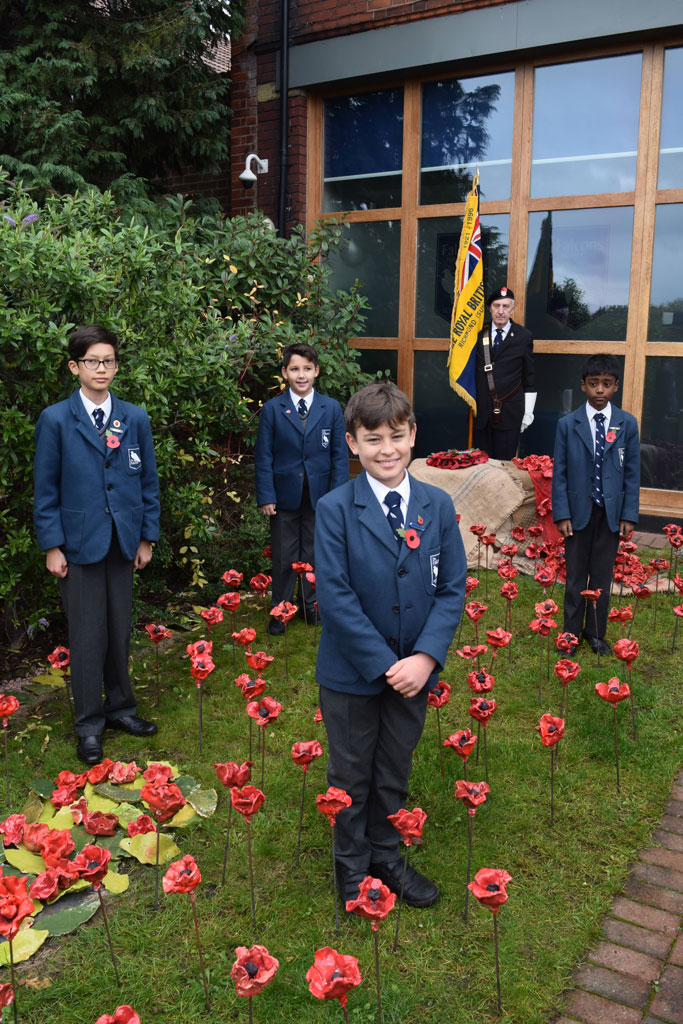
The new ‘Garden of Hope’
Falcons Preparatory School for Boys has creatively commemorated Armistice Day and the First World War Centenary, with the official opening of its Poppy Garden.
Pupils and staff members at the Richmond-based school have crafted their own unique ceramic poppies, each poppy including their family name. In a fitting tribute, a cascading flow of poppies has been formed in the school’s newly opened ‘Garden of Hope’, a space dedicated to those who sacrificed their lives.
Prior to gathering at the Garden of Hope for the official opening, pupils, staff and special guests joined together for an assembly held at the St John the Divine Church. A representative from the British Legion, David Burton the Poppy Appeal Organiser for Richmond and Surrey, and Standard Bearer Mike Foster, British Legion Chairman, spoke of ‘what we remember and what happened on 11th November’.
Director of Operations at The Poppy Factory, Sarah Casemore, informed attendees of the church ceremony the history of The Poppy Factory, an employment charity for veterans with health conditions or impairments, which also produces poppies and wreaths for the Royal Family and The Royal British Legion’s Annual Poppy Appeal at its Richmond factory.
Sarah also shared her thoughts about the significance of the poppy before joining pupils and guests back at the school to officially open the Garden of Hope. She commented:
‘It is wonderful that Falcons Preparatory School has taken the initiative to produce this magical garden of poppies to remember those who have lost their lives in the Forces. It is also a time to remember those who have come home from the Forces wounded, injured and sick. We know from our work at The Poppy Factory, supporting veterans with mental and physical health conditions back into employment, the challenges individuals face when they leave the Services. With our support they can go on to regain their self-esteem and financial independence.’
Head of Art and Design at Falcons School for Boys, Isabella Broadbent, added: ‘The boys have thoroughly enjoyed the process of creating their poppies for the garden, which is a beautiful whole school display that all pupils have contributed to.’
BRENTWOOD SCHOOL, ESSEX
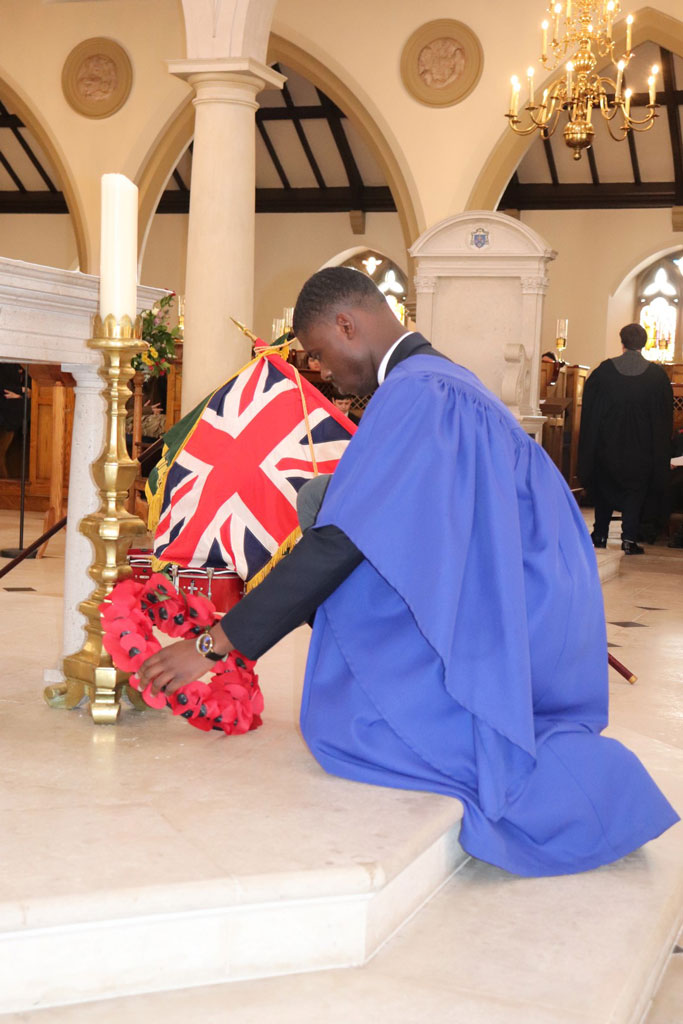
Head of Brentwood School, Victor Sarpong, laying the wreath
Brentwood School pupils and staff joined forces today to mark the centenary of the end of The Great War andremember all the men and women who have given their lives in the two World Wars and subsequent conflicts.
Special Remembrance Services were held across the campus, but this year’s tributes, on the eve of the Armistice Centenary, held a special resonance. “We gather today, just a few days from the most important act of remembrance that we are likely to witness in our lifetime”, said School Chaplain, theRevd Dr Adrian McConnaughie.
Addressing a congregation of Fifth and Sixth Formers in Brentwood Cathedral, the Revd Dr McConnaughie also reminded students and staff of the important role the School had played during the First World War and asked those present to renew their commitment to peace.
As temporary barracks for Territorial Battalions – so packed, that many men had to sleep on tables in the Chemistry laboratories – to a Voluntary Aid Detachment Hospital, the School played its part in the war effort. In fact, the School field, a compound for three battalion transports, was so damaged that traces of dug trenches could still be seen 10 years later.
Headmaster, Ian Davies joined the Revd Dr McConnaughie for the moving service, which witnessed the traditional Laying of the Wreath by the student Head of School, Victor Sarpong.
A Bible reading, given by Deputy Head of School, Tom Haward, was followed by the Headmaster’s poignant reading of lines from ‘For the Fallen (September 1914)’ by Laurence Binyon. Second Year, Ore Fashesin-Souza, played the ‘Last Post’ and ‘Reveille’ before the packed Cathedral fell completely quiet for the two-minute silence.
On Sunday, because Brentwood School’s Combined Cadet Force is the largest CCF in the country, their cadets took part in the town’s Remembrance Sunday Civic Parade.
CHELTENHAM COLLEGE, GLOUCESTERSHIRE
The stories of all 702 former Cheltenham College pupils and staff who died during World War On ehave been brought together for the first time in a new book, College Echoes by Patrick Stevens, published by Silverdart.
As part of the memorial we have asked four pupils; Tommy, Felix, Olivia and Oscar to study the school records of four former pupils, those at the school around the time the war broke out and all with one thing in common, they lost their lives in battle during World War One.
They discovered young people, with bright futures, who had similar interests and traits as themselves and ambitions that they never had the chance to live out. They found cricketers and rowers, athletes and aspiring leaders, often forgotten when we look back at a war that ended 100 years ago.
Speaking about the research the pupils undertook, General Sir Michael Rose KCB, CBE, DSO, QGM said:
‘I am so very pleased to see the pupils of today discovering the stories of the brave Cheltonians killed in the First World War. Like them, I often sat in Cheltenham College Chapel wondering what sort of people they had been whose names were now inscribed on the highly polished brass memorials lining the Chapel walls. I wondered where destiny would have taken them had their lives not been so suddenly cut short by war. The actions of the fallen may in some ways remain unsung, but they are not forgotten, – nor ever should they be. I hope that the pupils have discovered valuable lessons and insight that they can take on into their own bright futures.’
Cheltenham College has a long and esteemed link to the military which it continues to uphold. In total, during the 150-year history of Cheltenham College, over 6,000 Old Cheltonians have served their country and followed in the footsteps of the brave soldiers of World War One. To give some idea of the scale of the loss felt by College, in 1919 there were 636 boys enrolled in the school. Overall, 702 former masters and pupils lost their lives during WW1.
DAUNTSEY’S, WILTSHIRE
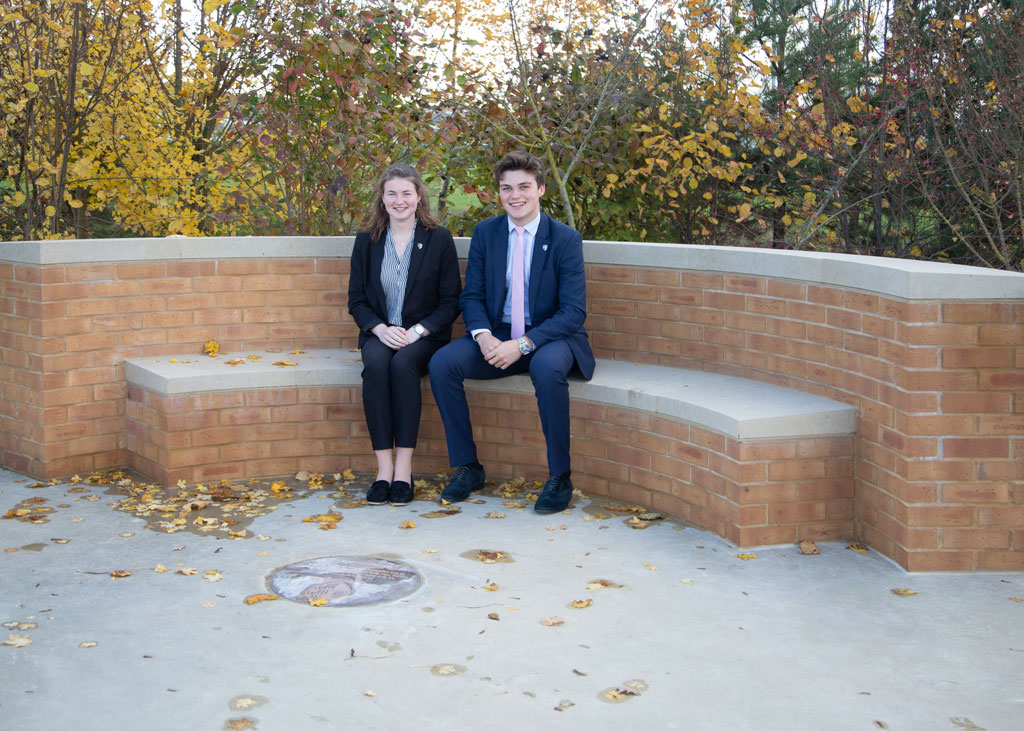
Dauntsey’s Head Girl and Head Boy took part in the unveiling of the commemorative seat and plaque
To commemorate the 38 Old Dauntseians who gave their lives in World War One, a stone seat and plaque were commissioned and formerly unveiled at the School on Sunday 11 November, the Centenary of the end of World War 1. The unveiling took place after the School Remembrance Service at which the address was given by Air Chief Marshall Sir Richard Johns GCB KCVO CBE.
The bench and plaque are located at the head of an avenue of 38 oak trees that were planted in 2016 in honour of those who fell.
Mr Ben Sandell, Head of History, Dauntsey’s said:
‘It is hoped that the trees will, quite literally, grow as a lasting memorial to those who gave their lives for the freedoms we enjoy today’.
LEWESTON PREP, DORSET
Leweston Prep School pupil, Jack Davis who plays rugby for Blandford RFC, is still recovering from the excitement of being the official RFU Mascot at the England vs All Black’s game at Twickenham on Saturday 10th November, over Remembrance Weekend.
Both of Jack’s Great Great Grandfathers fought in WW1. His great, great grandfather on his mother’s paternal side was Lancelot Slocock, who played and captained the England Rugby team in 1908. Sadly, he was then killed in 1916 at the Somme. The Rugby Football Union (RFU) have commemorated him and the other Rugby players who died over the past few years.
Jack’s great, great, grandfather on his mother’s maternal side was David ‘Padre’ Railton. Railton was the driving force behind the idea of honouring those ‘ghost battalions’ of British soldiers whose bodies were never identified. David went to the King in 1918 and suggested the Tomb of the Unknown Soldier. As a result of David’s idea, four unknown bodies were brought back from France and one buried in Westminster Abbey. David is remembered by the tomb in Westminster Abbey.
The Rugby Football Union have been leading a four year long tribute to the 27 internationals who died. Jack and his family have already been out to France with the RFU to take part in a short film which is available on their website, and met Prince Harry as part of the commemorations.
Jack, who is a keen rugby player and turns out regularly for his club, was over the moon to have been asked to be England’s mascot and practiced the National Anthem with his classmates at Leweston in the lead up to the event! He is pictured singing in the pouring rain. It was a fantastic way to remember his family’s legacy.
MALTMAN’S GREEN SCHOOL, BUCKINGHAMSHIRE
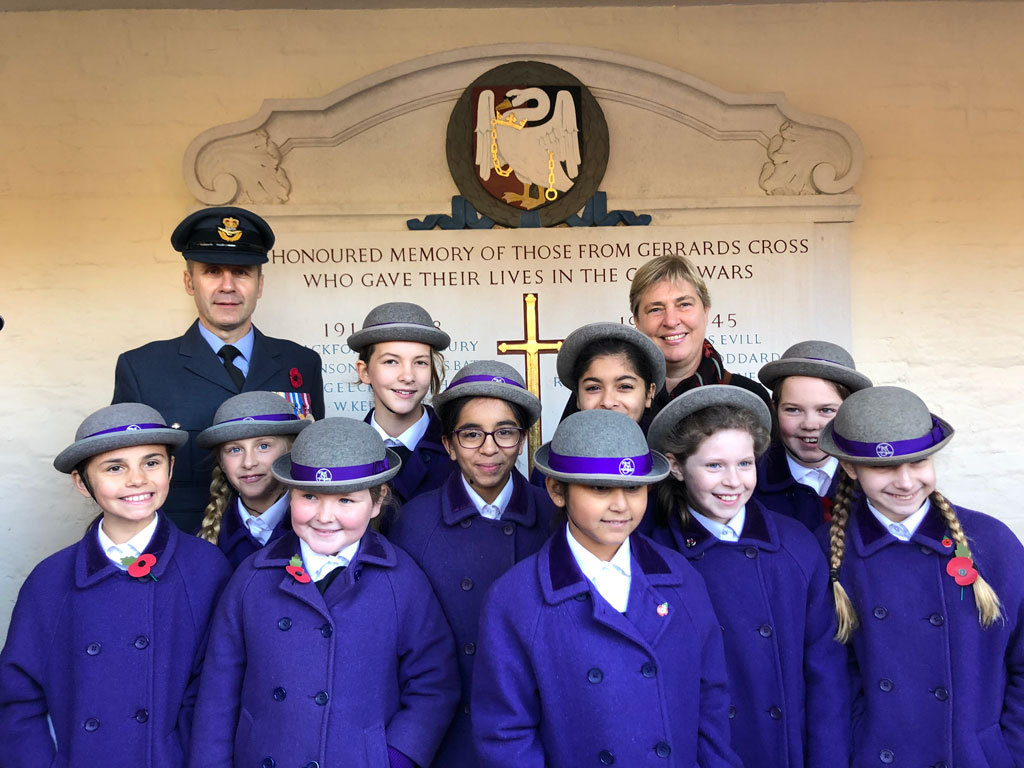
A group of Maltman’s girls joined their Headmistress and Bursar at the Gerrards Cross Service of Remembrance
Maltman’s Green School wanted to do something special to commemorate 100 years since the end of WWI, and so commissioned the girls in their Prep School to paint their own, unique poppies, remembering the courageous men and woman who served and sacrificed for our country.
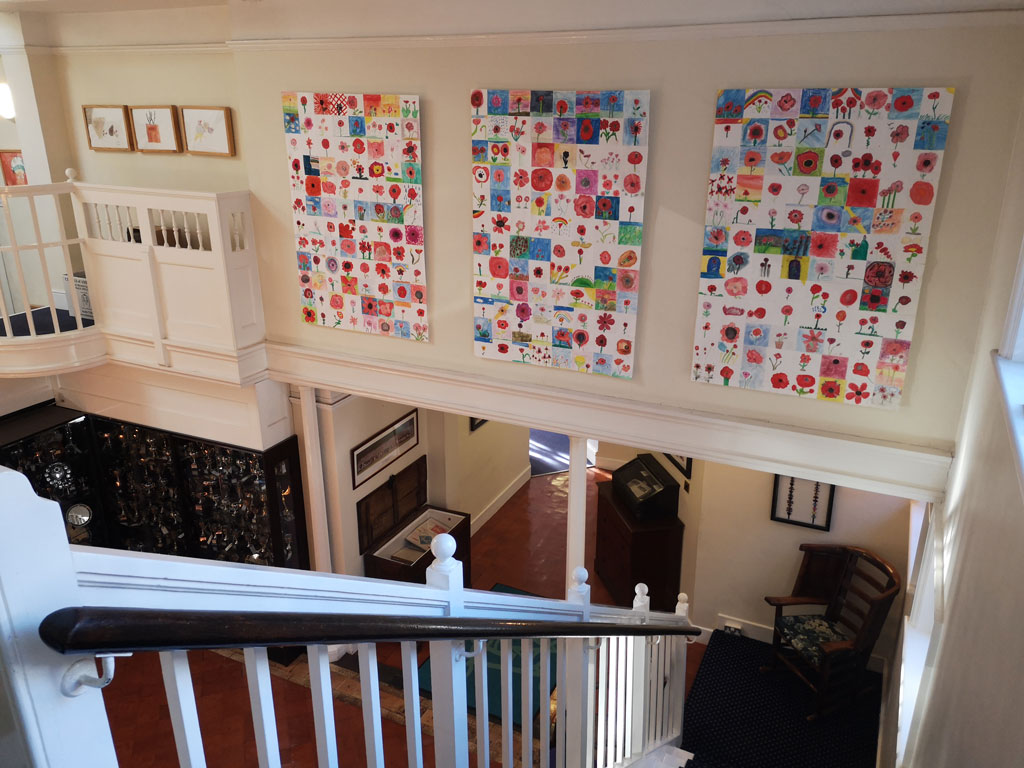
The school’s poppy collages
The poppies were combined afterwards to form three beautiful collages which have been installed in the School’s front hall in time for their remembrance services. This installation will stay up for many months to come.
Then, on Friday 9 November with a special assembly led by the bursar, Mr Beer, who spent 32 years serving in the Royal Air Force. Mr Beer was assisted by a number of girls who recited their own special remembrance poems.
On Sunday 11 November, a group of our girls accompanied the Headmistress, Mrs Pardon, and Mr Beer to the Service of Remembrance at Gerrards Cross where they lay a wreath for the fallen service men and women of the Great War and all since.
READ MORE: Prestigious School Anniversaries: 2018 Round Up

